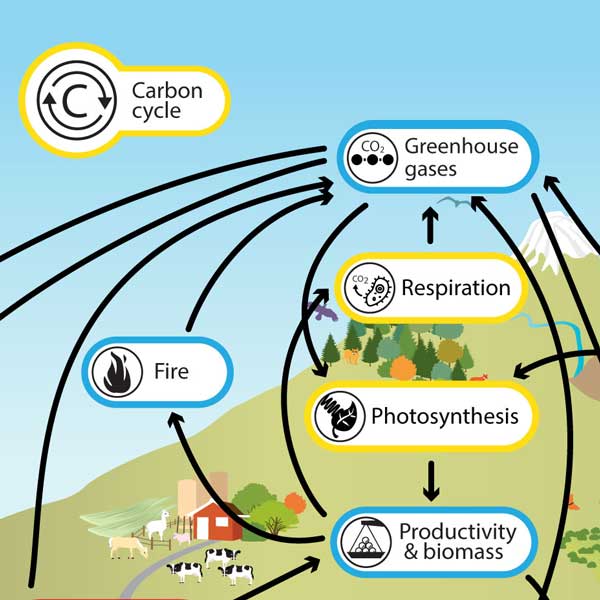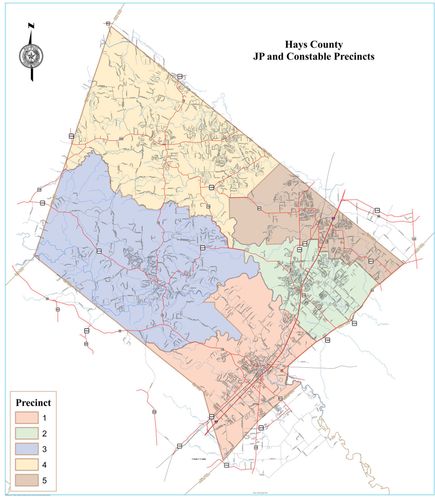Report on the Discovery of a Hadal Zone Ecosystem and its Implications for Sustainable Development Goals
A recent marine expedition has resulted in the discovery of a significant deep-sea chemosynthetic ecosystem within the hadal trenches located between Russia and Alaska. This finding has profound implications for several United Nations Sustainable Development Goals (SDGs), particularly SDG 14 (Life Below Water) and SDG 13 (Climate Action).
Executive Summary of Findings
An international research team has identified a vast ecosystem, spanning approximately 2,500 kilometers, at depths of 5,800 to 9,500 meters. This ecosystem is unique as it is not dependent on sunlight but is fueled by chemical energy derived from methane seeping from the ocean floor.
- Energy Source: The ecosystem is sustained by chemosynthesis, where microbes convert methane into energy.
- Biodiversity: The habitat supports various marine invertebrates, including previously unrecorded species of clams and tube worms, which host symbiotic bacteria.
- Geochemical Cycle: The ecosystem plays a newly discovered role in the carbon cycle, with microbes in the sediment converting organic matter into methane, creating a localized food source.
Alignment with Sustainable Development Goals (SDGs)
The discovery provides critical data and new perspectives on achieving global sustainability targets. The primary connections are to SDG 14 and SDG 13, with secondary links to SDG 9 and SDG 17.
SDG 14: Life Below Water
This research directly contributes to the goal of conserving and sustainably using the oceans, seas, and marine resources.
- Understanding Marine Biodiversity: The identification of new species and a novel ecosystem expands humanity’s knowledge of marine biodiversity (Target 14.a). It underscores how little is known about the deep ocean and the importance of protecting these unique habitats.
- Ecosystem Function: The findings reveal a complex food web that thrives in extreme conditions, offering insights into the resilience and adaptability of marine life. This knowledge is crucial for developing effective conservation strategies for deep-sea environments.
- Marine Pollution: Related research cited in the report, which found microplastics in a newly discovered species in the Mariana Trench (Eurythenes plasticus), highlights the pervasive threat of marine pollution (Target 14.1) and reinforces the urgent need to address plastic waste to protect even the most remote ecosystems.
SDG 13: Climate Action
The hadal trenches’ role in the global carbon cycle is a key finding that directly relates to climate change mitigation efforts.
- Natural Carbon Sinks: The discovery suggests that hadal trenches function as significant carbon sinks. The process of methane production and consumption by microorganisms sequesters large amounts of carbon in deep-sea sediments, preventing its release into the atmosphere as a potent greenhouse gas.
- Climate Regulation: By recycling methane, these ecosystems play a more important role in regulating the planet’s climate than previously understood. Protecting these natural systems is essential for taking urgent action to combat climate change and its impacts (SDG 13).
- Future Research: Further study of these carbon sequestration processes could inform global climate models and potential nature-based solutions for climate mitigation.
SDG 9 and SDG 17: Innovation and Partnerships
The success of this research and the potential for future discoveries are linked to technological innovation and international cooperation.
- Technological Advancement (SDG 9): Exploration of the hadal zone requires sophisticated technology, such as high-pressure-resistant submersibles and sensors. Continued investment in scientific research and innovation is necessary to further our understanding of these environments.
- Global Collaboration (SDG 17): The report emphasizes the need for collaboration between countries and scientific disciplines. Initiatives like the Global Hadal Exploration Program, co-led by UNESCO, exemplify the partnerships required to advance deep-sea science and achieve shared sustainability goals.
Conclusion
The discovery of this methane-fueled ecosystem in the hadal zone is a landmark scientific achievement. It significantly enhances our understanding of life on Earth and highlights the critical role of deep-sea environments in global ecological processes, particularly biodiversity and climate regulation. This new knowledge reinforces the importance of pursuing the Sustainable Development Goals, demanding increased efforts in marine conservation, climate action, technological innovation, and international scientific partnership to protect these vital yet vulnerable frontiers.
1. Which SDGs are addressed or connected to the issues highlighted in the article?
SDG 14: Life Below Water
- The article’s core subject is the discovery of a new deep-sea ecosystem, which directly relates to understanding and protecting marine life. It discusses the biodiversity of the hadal zone, mentioning the discovery of “various species of clam and tube worm that had never been recorded so deep below the surface.” The article also touches upon the threat of marine pollution, citing the discovery of a species named for the “microplastic fibers detected in its gut.”
SDG 13: Climate Action
- The article connects the newly discovered ecosystem to the global carbon cycle and climate change. It explains that hadal trenches act as significant “carbon sinks,” which are “crucial for our planet given that methane and carbon dioxide are two major greenhouse gases driving global warming.” The research suggests these ecosystems play a more important role in sequestering carbon than previously understood.
SDG 17: Partnerships for the Goals
- The article highlights the importance of international scientific collaboration for deep-sea research. It explicitly mentions the “Global Hadal Exploration Program, which is co-led by UNESCO and the Chinese Academy of Sciences,” and its goal to “create a network of deep-sea scientists from multiple countries.” This emphasizes the need for partnerships to advance scientific knowledge and technology.
2. What specific targets under those SDGs can be identified based on the article’s content?
Targets under SDG 14: Life Below Water
-
Target 14.1: By 2025, prevent and significantly reduce marine pollution of all kinds, in particular from land-based activities, including marine debris and nutrient pollution.
- This target is addressed when the article mentions the discovery of a species in the Mariana Trench named Eurythenes plasticus “for the microplastic fibers detected in its gut.” This finding demonstrates that marine debris and pollution are reaching even the most remote and deepest parts of the ocean, highlighting the urgency of this target.
-
Target 14.2: By 2020, sustainably manage and protect marine and coastal ecosystems to avoid significant adverse impacts, including by strengthening their resilience, and take action for their restoration in order to achieve healthy and productive oceans.
- The discovery of a “roughly 2,500-kilometer (1,550-mile) stretch of what her team says is the deepest known ecosystem” underscores the need to protect unique and fragile marine environments. The research provides foundational knowledge necessary for managing and protecting these deep-sea ecosystems from potential future harm.
-
Target 14.a: Increase scientific knowledge, develop research capacity and transfer marine technology, taking into account the Intergovernmental Oceanographic Commission Criteria and Guidelines on the Transfer of Marine Technology, in order to improve ocean health and to enhance the contribution of marine biodiversity to the development of developing countries, in particular small island developing States and least developed countries.
- The entire article is a testament to this target. It describes a scientific expedition using advanced submersibles, the publication of findings in a scientific journal, and the need for “new technology that can withstand high pressure in deep-sea environments to document undiscovered organisms.”
Targets under SDG 13: Climate Action
-
Target 13.3: Improve education, awareness-raising and human and institutional capacity on climate change mitigation, adaptation, impact reduction and early warning.
- The article contributes to this target by raising awareness about the role of deep-sea ecosystems in climate change mitigation. The finding that “hadal zone sediments could sequester as much as 70 times more organic carbon than the surrounding seafloor” enhances scientific and public understanding of natural carbon sinks, which is a key aspect of building capacity for climate action.
Targets under SDG 17: Partnerships for the Goals
-
Target 17.6: Enhance North-South, South-South and triangular regional and international cooperation on and access to science, technology and innovation and enhance knowledge-sharing on mutually agreed terms.
- This target is directly supported by the article’s mention of the “Global Hadal Exploration Program,” which is described as a collaborative effort “co-led by UNESCO and the Chinese Academy of Sciences” that “aims to do just that by creating a network of deep-sea scientists from multiple countries.” This program exemplifies international cooperation in science.
3. Are there any indicators mentioned or implied in the article that can be used to measure progress towards the identified targets?
Indicators for SDG 14: Life Below Water
-
Indicator for Target 14.1: Presence of plastic debris in marine species.
- The article provides a specific, qualitative indicator: the detection of “microplastic fibers” in the gut of the deep-sea species Eurythenes plasticus. This serves as direct evidence of plastic pollution in the deepest marine environments.
-
Indicator for Target 14.2: Extent and biodiversity of newly discovered ecosystems.
- The article provides baseline data that can be used as an indicator. This includes the geographical extent of the ecosystem (“a roughly 2,500-kilometer (1,550-mile) stretch”) and its depth (“about 5,800 to 9,500 meters”). The identification of new species of “clam and tube worm” serves as an indicator of biodiversity.
-
Indicator for Target 14.a: Number of scientific publications and development of new research technologies.
- The publication of the study in the journal Nature is an implicit indicator of an increase in scientific knowledge. The article’s reference to the need for and use of “new technology that can withstand high pressure” points to the development of research capacity.
Indicators for SDG 13: Climate Action
-
Indicator for Target 13.3: Quantification of carbon sequestration in marine ecosystems.
- The article provides a quantitative estimate that can serve as an indicator: “hadal zone sediments could sequester as much as 70 times more organic carbon than the surrounding seafloor.” This data improves our understanding and capacity to model climate change mitigation.
Indicators for SDG 17: Partnerships for the Goals
-
Indicator for Target 17.6: Existence of international collaborative scientific programs.
- The article explicitly names the “Global Hadal Exploration Program” as an indicator of international cooperation. The program’s structure, “co-led by UNESCO and the Chinese Academy of Sciences” and involving “a network of deep-sea scientists from multiple countries,” is a concrete example of a partnership for science.
4. Create a table with three columns titled ‘SDGs, Targets and Indicators’ to present the findings from analyzing the article.
| SDGs | Targets | Indicators |
|---|---|---|
| SDG 14: Life Below Water |
14.1: Reduce marine pollution.
14.2: Protect and restore marine ecosystems. 14.a: Increase scientific knowledge and research capacity. |
Detection of “microplastic fibers” in the gut of the deep-sea species Eurythenes plasticus.
Discovery of a 2,500-kilometer deep-sea ecosystem and new species of clam and tube worm. Publication of research in the journal Nature and the development of new deep-sea exploration technology. |
| SDG 13: Climate Action | 13.3: Improve education and awareness on climate change mitigation. | The estimate that “hadal zone sediments could sequester as much as 70 times more organic carbon than the surrounding seafloor.” |
| SDG 17: Partnerships for the Goals | 17.6: Enhance international cooperation on science, technology, and innovation. | The existence of the “Global Hadal Exploration Program,” co-led by UNESCO and the Chinese Academy of Sciences, involving a network of scientists from multiple countries. |
Source: cnn.com







